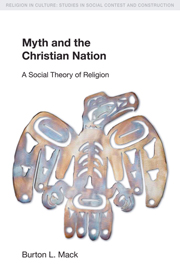Book contents
- Frontmatter
- Contents
- Dedication
- Preface
- Introduction
- Part I The Religions of Other Peoples
- Part II The Religion of Christianity
- Chapter 5 Early Christian Mythmaking
- Chapter 6 The Social Formation of Christendom
- Chapter 7 The State of the Christian Nation
- Chapter 8 Religions in a Polycultural World
- Conclusion
- Bibliography
- Index
Chapter 6 - The Social Formation of Christendom
from Part II - The Religion of Christianity
- Frontmatter
- Contents
- Dedication
- Preface
- Introduction
- Part I The Religions of Other Peoples
- Part II The Religion of Christianity
- Chapter 5 Early Christian Mythmaking
- Chapter 6 The Social Formation of Christendom
- Chapter 7 The State of the Christian Nation
- Chapter 8 Religions in a Polycultural World
- Conclusion
- Bibliography
- Index
Summary
With Constantine the foundations of an edifice were laid that we call the Church. In this chapter those foundations will be noted, the subsequent construction of the edifice will be discussed, the imagined world created by its systems of myth and ritual will be described, some transformations and reproductions throughout its history will be analyzed, and the question of a Christian mentality will be raised. From Constantine to the present is a long stretch of Christian history, much too vast to be summarized in a chapter. Thus the focus will fall on just those topics and moments that allow us to apply the categories from our emerging social theory of religion. We want to analyze the social interests of the church and the myth and ritual systems of Christianity as structures of an imagined world in order to ask about the mythic grammar that underlies certain ways of thinking about the social worlds.
The Foundation Stones
At the end of the last chapter the establishment of Christianity as an institution of the Roman Empire was briefly described as a remarkable and innovative turn of events for the bishops of Christian congregations and for the relation of the Roman Empire to its erstwhile religions and cultures. We can now position the foundation stones laid during that brief period of change, and ask about the construction of the edifice built upon them during the next several hundred years.
- Type
- Chapter
- Information
- Myth and the Christian NationA Social Theory of Religion, pp. 183 - 216Publisher: Acumen PublishingPrint publication year: 2008

